The most effective method to get rid of squirrels is to trap them. You can also get a squirrel to evict itself with a one-way valve. If you set traps to get rid of squirrels, check them daily. You don’t want to leave a squirrel in a trap for longer than necessary.
Squirrels in North Carolina
North Carolina is home to five species of squirrels. The Eastern Gray Squirrel, the Red Squirrel, the Eastern Fox Squirrel, and two species of flying squirrels (Northern Flying Squirrel and Southern Flying Squirrel). Rounding out the Sciuridae family in North Carolina is Eastern Chipmunks and Woodchucks.
In Wake County, the Eastern Gray Squirrel, the Eastern Fox Squirrel, and the Southern Flying Squirrel are present. Red Squirrels and Northern Flying Squirrels are in the Western North Carolina Mountains.
Why Are Squirrels in My Home?
The most common squirrel in Wake County is the Eastern Gray Squirrel (it’s also the state’s official mammal). Gray squirrels have adapted to live among people and thrive in rural, urban, and suburban environments.
Squirrels can have two litters a year, and they will seek out a safe place to build a nest. Attics, sheds, and chimneys provide all the elements need to build a nest.
The majority of the entry points we find on houses are actually construction gaps, areas that have been accessible since the home was built. If a squirrel can’t find a hole big enough, their sharp incisors can gnaw through home materials.
Squirrels need an entry point no larger than a golf ball. When they can’t find a entry hole big enough, they’ll gnaw until it is large enough. Most housing materials cannot withstand a dedicated rodent gnawing.
Typical squirrel entry points in Raleigh-Durham are ridge vents, gable vents, chimneys, soffits, roof returns, and fascia boards.
A squirrel found an entry point in the roof return in this Durham home. The construction gap was nearly invisible when looking from the ground. Our technician noticed sunlight peeking through the gap during the attic inspection. The construction gap ran the length of the roof return but was only a few inches wide.
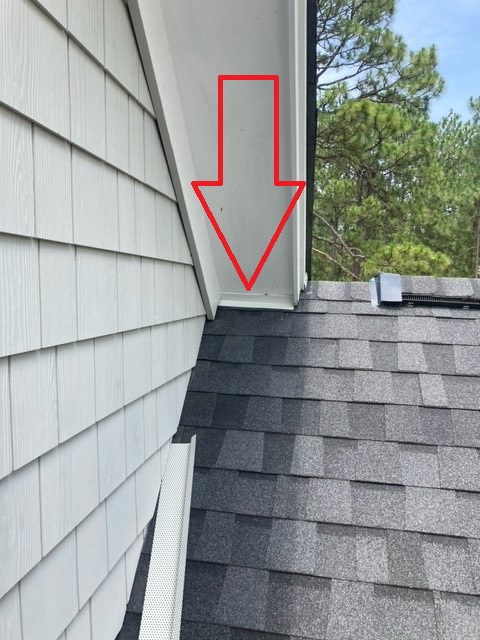
Squirrel Trapping
Before we could repair the squirrel damage to the exterior, we need to safely remove the squirrel. Adult squirrels are quick and crafty. It makes it very difficult to capture them.
In this case, we installed a squirrel trap at the main entry point. We sealed the other entry points so the squirrel had only one exit point. She safely evicted herself from the house. Afterward, we did another full inspection of the attic to ensure all squirrels were gone.
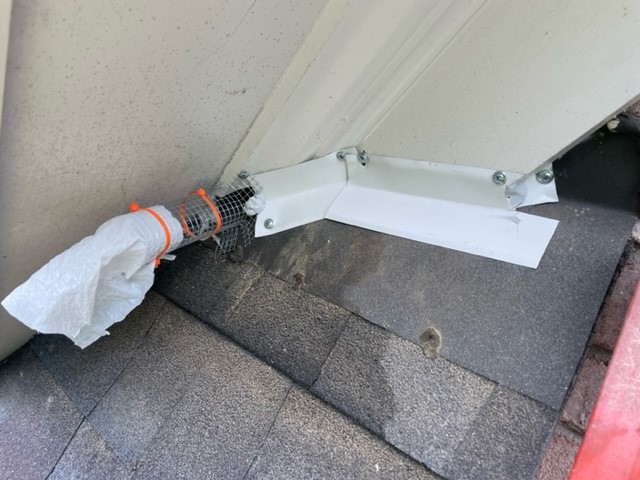
Squirrel Control in Raleigh-Durham
After the squirrels have been removed, it is essential to prevent future squirrel problems. Whole-home exclusions identify any potential entry point such as gaps around siding, vents, chimneys, and windows, to keep squirrels out of homes. We close the holes with materials squirrels cannot gnaw through. Trimming branches away from home can remove easy access to your roof.
Habitat Modifications
You can make your yard less attractive to squirrel populations. Thinning out dense branches, removing easily accessible food sources, and implementing squirrel baffles to protect birdfeeders all reduce the possibility of drawing squirrel infestations.
Let the Experts in To Get Squirrels Out
The experts at Trutech Wildlife Service have the experience and training to effectively solve your squirrel problem. We seal your home from future problems, safely trap and remove the animal, and clean up and sanitize the area.
Squirrel Control Porfolio in Raleigh-Durham
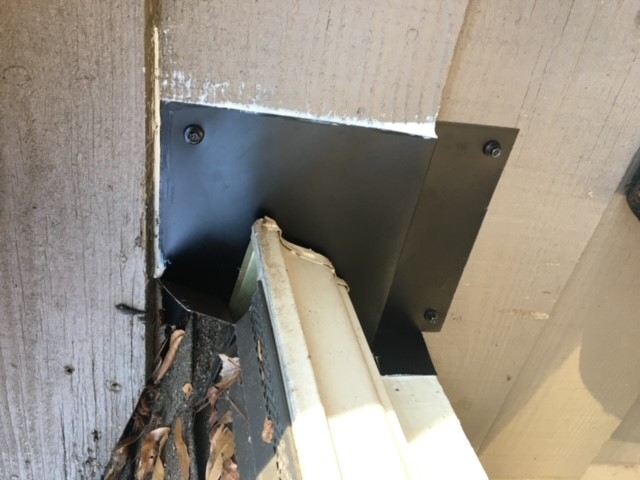
Large squirrel hole was sealed squirrel hole with galvanized steel.
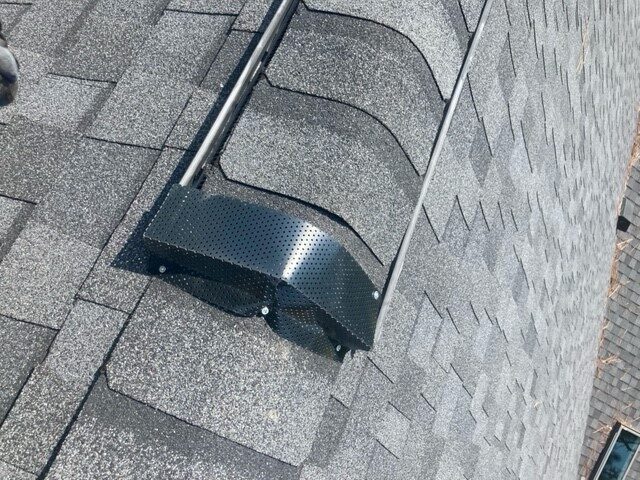
Installed Ridge Guard for squirrel control but also works to keep rats and bats out.
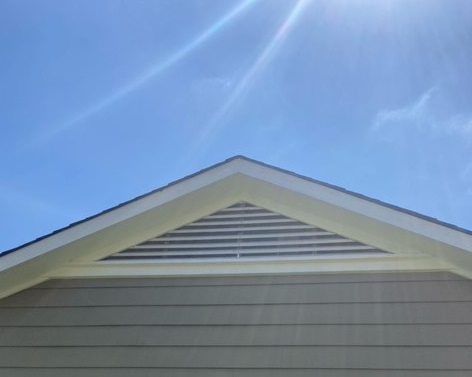
Most homes do not have adequate protection on their gable vents. Installed screens keep squirrels from gnawing back inside.
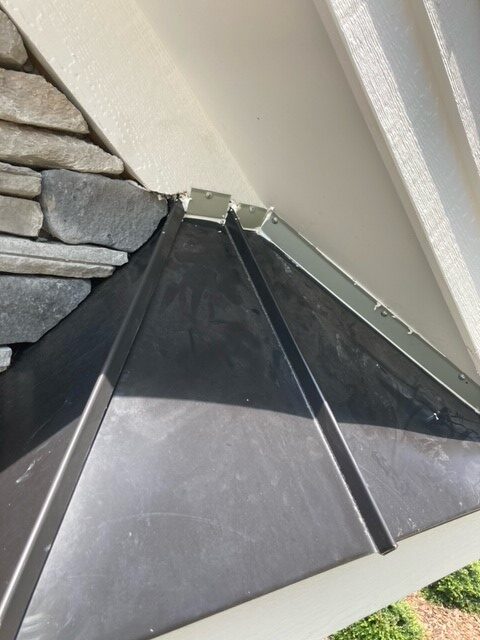
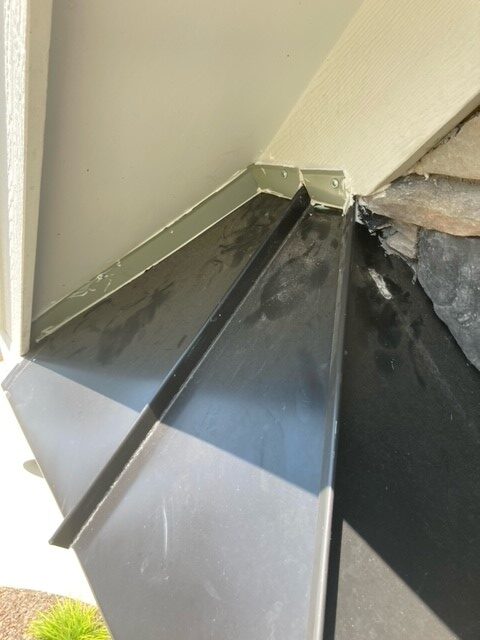
Custom metal work under the dormer keeps rodents from gnawing into the attic.


